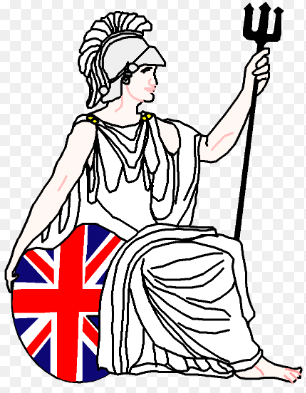June 2019
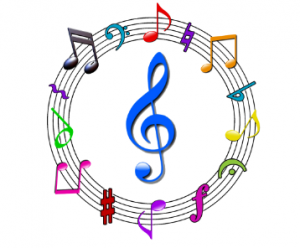 You can’t get near English Baroque music without having foreigners come out of the woodwork right and left. There’s Mr. Handel at the top of the heap, of course, and Johann Christian Bach, and Francesco Geminiani, and … and … It’s time to rev up those Anglophile engines and turn the spotlight on some remarkable native sons of that green and pleasant land who also had their way with a tune. I certainly don’t mean to pooh-pooh the contributions of the German and Italian contingents to the musical life of England in the 18th century, but hey, give the locals a chance. Instead of five more recordings of Handel’s Messiah how about a recording of the complete works of Thomas Erskine, 6th Earl of Kellie? Doesn’t that sound like fun? Absolutely it does, so let’s bust out of the box and have a look at some English composers of the Baroque who should be far better known than they are IMHO. As usual, I’m talking from experience not from hearsay. If I don’t own at least one recording of a composer the name has not gone on this list. Let’s get going and get limey.
You can’t get near English Baroque music without having foreigners come out of the woodwork right and left. There’s Mr. Handel at the top of the heap, of course, and Johann Christian Bach, and Francesco Geminiani, and … and … It’s time to rev up those Anglophile engines and turn the spotlight on some remarkable native sons of that green and pleasant land who also had their way with a tune. I certainly don’t mean to pooh-pooh the contributions of the German and Italian contingents to the musical life of England in the 18th century, but hey, give the locals a chance. Instead of five more recordings of Handel’s Messiah how about a recording of the complete works of Thomas Erskine, 6th Earl of Kellie? Doesn’t that sound like fun? Absolutely it does, so let’s bust out of the box and have a look at some English composers of the Baroque who should be far better known than they are IMHO. As usual, I’m talking from experience not from hearsay. If I don’t own at least one recording of a composer the name has not gone on this list. Let’s get going and get limey.
Germans, Germans, Everywhere …
It started at the top, of course, as it often does in monarchies. If you know your facts about Georgian England then you’re aware that the very first George was as German as Jägermeister. He didn’t even speak English. Here’s the story in brief from the King’s Wikipedia page (here):
George was born in Hanover and inherited the titles and lands of the Duchy of Brunswick-Lüneburg from his father and uncles. A succession of European wars expanded his German domains during his lifetime, and in 1708 he was ratified as prince-elector of Hanover. At the age of 54, after the death of his second cousin Anne, Queen of Great Britain, George ascended the British throne as the first monarch of the House of Hanover. Although over 50 Roman Catholics were closer to Anne by primogeniture, the Act of Settlement 1701 prohibited Catholics from inheriting the British throne; George was Anne’s closest living Protestant relative. In reaction, Jacobites attempted to depose George and replace him with Anne’s Catholic half-brother, James Francis Edward Stuart, but their attempts failed.
And thus came the Germans to Merry Old and sat down in the driver’s seat. Handel was already on the London scene, of course, and the King was familiar with him, so if you’re a German who doesn’t speak English and there’s hotstuff Handel in town who’s as German as you are, whatcha gonna do when you need some tunes? You’re going straight to Herr Handel, of course, which is exactly what Georg Ludwig aka George I of Great Britain did. From that point Handel was in like Flynn and the native sons took the back seats in the bus.
Handel wrote fantastic music, that point is not under contention. What I find a great pity is what that old bugbear — canon formation — has done to the reputation of native English composers of the period. They’ve been pushed into the shadows. Had Handel never gone to England they would have shone forth in their true light as the marvelous composers they were. My purpose in this post is to make a small contribution to the increase of their justly deserved fame. They should be household words just as Handel is. So let’s put down that Weißwurst and pick up a scone loaded with Devon clotted cream, shall we?
Stylistic Strains in English Baroque Music
I’m going completely out on a limb here, but since I’m not a card-carrying musicologist it doesn’t matter if I’m talking twaddle or not. My ears have supplied the evidence I present and that’s my story so I’m sticking to it. You’re free to collect your own evidence and draw your own conclusions.
In the historical canon there’s only one native son who approaches Handel’s exalted rank: Henry Purcell. I haven’t included him in the list of composers in this post because it seems a bit much of a muchness. I certainly own plenty of recordings of Purcell’s music, including a 7-CD set of his royal and ceremonial odes, which are wonderful things. But I’ve always had an ambivalent relationship to Purcell’s music. His sensibility is entirely different from that of old Handel. That fact hits the ear quite strongly on the hearing. I have my own theory about what underlies the difference, so here it is.
Handel studied in Italy as a young man and made quite a splash there. Obviously that experience was formative for him as a composer later in life, as was his continual collaboration with Italian vocal superstars as an opera composer in London. German composers of the period in general turned to Italy as the musical Promised Land and studying in Italy with some star on the Italian musical firmament was one of the things you just did if you wanted to hit the Big Time. The Germans were, then, Italo-centric with regard to their musical orientation. They paid relatively little homage to the French way of doing things.
Purcell never studied outside England. His biography points out, in fact, that he was entirely a product of the local musical establishment in London (from his Wikipedia page, here):
Purcell was born in St Ann’s Lane, Old Pye Street, Westminster – the area of London later known as Devil’s Acre – in 1659. Henry Purcell Senior, whose older brother, Thomas Purcell, (died 1682) was a musician, was a gentleman of the Chapel Royal and sang at the coronation of King Charles II of England. Henry the elder had three sons: Edward, Henry and Daniel. Daniel Purcell, the youngest of the brothers, was also a prolific composer who wrote the music for much of the final act of The Indian Queen after Henry Purcell’s death. Henry Purcell’s family lived just a few hundred yards west of Westminster Abbey from 1659 onwards.
After his father’s death in 1664, Purcell was placed under the guardianship of his uncle Thomas, who showed him great affection and kindness. Thomas was himself a gentleman of His Majesty’s Chapel, and arranged for Henry to be admitted as a chorister. Henry studied first under Captain Henry Cooke, Master of the Children, and afterwards under Pelham Humfrey, Cooke’s successor. The composer Matthew Locke was a family friend and, particularly with his semi-operas, probably also had a musical influence on the young Purcell. Henry was a chorister in the Chapel Royal until his voice broke in 1673, when he became assistant to the organ-builder John Hingston, who held the post of keeper of wind instruments to the King.
So Purcell was an English endemic, as it were, not a foreign invasive species like Handel with his Germanness and his fancy Italian ways. Purcell spent all his formative years under the tutelage of English composers and musicians associated with the royal court. There were certainly foreign influences, but from where? If one is to believe one’s ears, they came from just across the Channel: France. I remember thinking to myself once when listening to the symphonia of one of the ceremonial odes: “This sounds completely French, how did that happen?” Chalk it up to the Stuart monarchs and their French proclivities. Charles I married Henrietta Maria of France and French remained for years the preferred language of the court because the Queen never learned to speak English properly. Charles II and his French maman lived in exile in France for 20-odd years during the Commonwealth until the Restoration brought Charles back to the English throne in a thoroughly Frenchified state. He remained fond of things French and cultivated French music at his court. French influence was all over the place, so it got all over anybody connected with the court as Purcell was. The same is true of Purcell’s teacher, John Blow, whose French influence is also obvious to the ear.
Let’s name the main name behind the influence: Jean-Baptiste Lully. Lullian influence shows itself especially in Purcell’s use of unequal metric rhythms — he’s as fond of iambs (short-long metrics) as the French were of trochees (long-short metrics, what the French called notes inégales). It all combines to result in a musical landscape distinctly different from the Teutonic/Italic province Handel and his ilk inhabited. Purcell sounds to my ear at times a bit like a musical jumble sale. French vertical harmonic writing combines with the jaunty tunes of an English jig or a whiff of the old English style looking back toward Elizabethan times. The frequent iambs make it seem at times that we might soon find ourselves kicking up our heels on a heath in Aberdeenshire. The music is lovely, on that matter that there is no doubt, but I find myself left at times puzzled despite its beauty. It’s like being at an international buffet and ending up with all sorts on your plate. It all tastes good but you’d never conceive of ordering that mix at a regular restaurant. It leaves one with a mild sense of unease, of being slightly naughty. Should I really have pot au feu next to my scones with clotted cream (the jam’s on the top, by the way, which tells you what sort of person I am). It’s all quite exciting but isn’t it a bit outré? It may well be. Worse things have happened, however, so we needn’t agonize over it, just take note and keep it to yourself..
So the evidence clearly points to two strains in the English Baroque: a Handelian strain and a Purcellian strain. I’d be the last person to say that one is better than the other. Both have their legitimacy and their aesthetic contribution to make. The more the merrier in Merry Old, that’s my philosophy. The Handelian strain takes the upper hand in the period, however, that much is clear. Most of the English composers on my list are quite squarely Handelian, not Purcellian — an important point to keep sorted out but in no manner indicative of relative merit. At the end of the day it’s all good.
With that business sorted out we’re ready to take a look at our list of should-be luminaries. As mentioned above I speak from the standpoint of personal experience here, since I own recordings of music by the composers discussed. I only wish there were more recordings available — instead of sixteen different recordings of Messiah by Herr Handel. Fingers crossed that somebody takes up the gauntlet that English musical history has thrown down.
Here’s the list: Thomas Arne, William Boyce, John Blow, Capel Bond, William Croft, Thomas Roseingrave, Thomas Ravenscroft, William Williams and Thomas Alexander Erskine, 6th Earl of Kellie. Off we go for a closer look.
![]()
Thomas Arne (1710-1778)
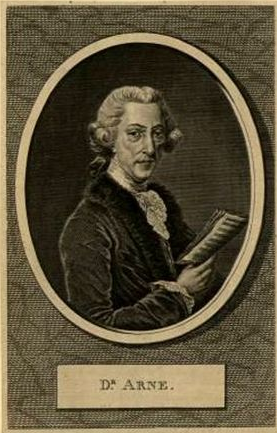
For someone who wrote “Rule Britannia” you’d think Arne would be something more of a household name these days. In the Wikipedia page on him (here) we also learn that Arne’s opera Artaxerxes impressed both the young Mozart and Haydn when he visited London. Such news makes it even more diffcult to understand why Arne’s works have so few modern recordings, with a focus on instrumental music whereas vocal music was decidedly his strongpoint and forms the bulk of his oeuvre. Such are the disfigurations canon formation works on the transmission of our musical heritage.
Arne’s life was led entirely in England and his training was entirely English but with an Italian accent. Michael Christian Festing was his hook-by-crook teacher. I was astonished to learn about the connection between the two because I’d come across years ago a body of Festing’s trio sonatas copied during WWII as part of the Works Progress Administration and published as part of a multivolume set by Garland. Festing studied with Francesco Geminiani (1687-1762), a native of Lucca and a student of both Alessandro Scarlatti and Arcangelo Corelli, so the pupil became a decidedly Italianate figure in the London of his day. Arne, too, falls into the Handelian/Italianate stream of things.
The fact that Arne wrote tons of music is evidenced by the fact that there’s a separate Wikipedia page listing his compositions (here). He wrote over 90 stage works alone, to say nothing of instrumental and sacred vocal music. So clearly he should be more famous just by dint of effort expended. Yet when I check in Amazon I find only a few recordings of instrumental music and two operas, one of them the aforementioned Artaxerxes. The other is Alfred — properly a masque, not an opera, conducted by Nicholas McGegan and published in 1999 (the selfsame work that contains “Rule, Britannia” btw). Artaxerxes, which so impressed Mozart and Haydn, was released in 2011 and has one — count ’em one — user review. So much for being the most important English opera composer of the 18th century according to some scholars. That and fifty cents won’t get you a cup of coffee in the musical landscape of this year of our Lord 2019.
I own three recordings of Arne’s music. The first is a recording by Collegium 90 of Arne’s complete trio sonatas. The second is Six Favourite Concertos performed by The Parley of Instruments, presenting a group of works Arne wrote over the course of his career. The concertos were compiled in 1793, 15 years after the composer’s death, and published as a set. The third recording is vocal music with the inimitable Emma Kirkby doing the warbling. Arne’s vocal music is the perfect vehicle for the English sparrow soprano, which of course Kirkby does to perfection, being both sparrow-like and as English as pasties.
When you look at Arne’s dates it’s easy to see that he was caught up in the change from Baroque to galant style that pointed toward the Classical idiom coming close on the galant style’s heels. Despite the galant overtones Arne’s idiom remains solidly Baroque, in my opinion. It’s all very well to write a smooth melody and have your vocalist do a bit of bel canto, but Arne’s compositional approach remains thoroughly Baroque when you look at the accompanying voices. But it’s Baroque lite, to be sure. It’s difficult to imagine Arne writing something like one of Handel’s coronation odes. He’s too much a creature of the theater, he lacks the gravitas, the pomp and circumstance to be a proper state composer. But that’s no hindrance to the appreciation of his music. It’s thoroughly competent, tuneful and shows a great sense of humor.
If you want to have a listen on YouTube you’ll find several things, including plenty of instrumental works. Most of the opera excerpts are long in the tooth and feature singers like Joan Sutherland. For my money you’re asking for trouble if you have your Arne delivered by somebody who’s been brought up on Lucia di Lammermoor. Just saying … nothing wrong with Donizetti operas, of course, but they subscribe to an aesthetic very different from that of the late Baroque. There’s also the issue that the orchestra sounds like 101 Strings instead of a nimble Baroque ensemble. But hey, it’s your call.
Surely a composer with so large an oeuvre and so high a reputation during his lifetime deserves to have a bit of that glory bleed over into the 21st century. Give Arne a try and see if you don’t think that assessment has some weight behind it.
![]()
William Boyce (1711-1779)
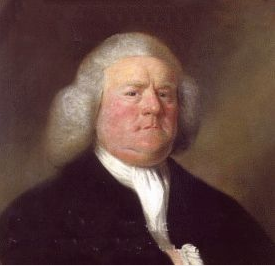
Boyce could easily have been Handel’s understudy, that’s how Handelian he is. I’ve always been fond of his music. It’s solid as houses and ever so lively. Just the thing for a good tap of the foot along with the music. These days he gets very short shrift, indeed, which I find a great pity. Apart from his set of symphonies it’s hard to come across any recordings of his music.
Here’s the biographical skinny from his Wikipedia page (here):
Born in London in Joiners Hall, then in Lower Thames Street, to John Boyce, at the time a joiner and cabinet-maker, and beadle of the Worshipful Company of Joiners and Ceilers, and his wife Elizabeth Cordwell, Boyce was baptised on 11 September 1711 and was admitted by his father as a choirboy at St Paul’s Cathedral in 1719, before studying music with Maurice Greene after his voice broke in 1727. (A house in the present choir school is named after him.)
His first professional appointment came in 1734 when he was employed as an organist at the Oxford Chapel in central London. He went on to take a number of similar posts before being appointed Master of the King’s Musick in 1755 and becoming one of the organists at the Chapel Royal in 1758. One of his students was the prodigy Thomas Linley.
By the year 1758 his deafness had increased to such an extent that he was unable to continue in his organist posts. He resolved to give up teaching and to retire to Kensington, and devote himself to editing the collection of church music which bears his name. He retired and worked on completing the compilation Cathedral Music that his teacher Greene had left incomplete at his death. This led to Boyce editing works by the likes of William Byrd and Henry Purcell. Many of the pieces in the collection are still used in Anglican services today.
Take a look at this list just of stage works by Boyce given on the website musicalics.com (here):
Corydon and Miranda: intermezzo• (1750)• After playsBlate Jonny ‘A Scots cantata’• (1756)• Cantates profanes : soli-chœur-orchestreBlest in Maria’s Friendship• (1748)• Cantates profanes : soli-chœur-orchestreDanae• Cantates profanes : soli-chœur-orchestreLong with Undistinguished Flame• (1747)• Cantates profanes : soli-chœur-orchestreTell me Ye Brooks• (1747)• Cantates profanes : soli-chœur-orchestreThou Rising Sun ‘The Lapland cantata’• (1744)• Cantates profanes : soli-chœur-orchestreThrough Flowery Meads• (1735)• Cantates profanes : soli-chœur-orchestreThus on a Bed of Dew Bespangled Flowers• Cantates profanes : soli-chœur-orchestreWhen the Celestial Beauties Strove• (1735)• Cantates profanes : soli-chœur-orchestreYoung Damon Fired With Amorous Heat• (1735)• Cantates profanes : soli-chœur-orchestreGentle Zephyrs Smoothly Rove: sérénade• (1735)• Hymnes – odes – sérénades – élégies : soli-chœur-orchestreOdes• Hymnes – odes – sérénades – élégies : soli-chœur-orchestreOdes pour l’Anniversaire du Roi• Hymnes – odes – sérénades – élégies : soli-chœur-orchestreOdes pour la Nouvelle Annee• Hymnes – odes – sérénades – élégies : soli-chœur-orchestreSolomon• (1742)• Hymnes – odes – sérénades – élégies : soli-chœur-orchestreOdes du ‘Del canzoniere d’Orazio di Giovan Gualberto Bottarelli’• (1757)• Hymnes – odes – sérénades – élégies : soli-chœur-orchestreAgis• (1758)• Musiques de scène – MasquesAmphitryon• (1756)• Musiques de scène – MasquesBoadicea• perdu• (1753)• Musiques de scène – MasquesChaplet (The)• (1749)• Musiques de scène – MasquesConscious Lovers (The)• (1759)• Musiques de scène – MasquesCymbeline• (1746)• Musiques de scène – MasquesFlorizel and Perdita or The Winter’s Tale• (1756)• Musiques de scène – MasquesGamester (The)• (1753)• Musiques de scène – MasquesHarlequin’s Invasion or A Christmas Gambol• (1759)• Musiques de scène – MasquesHarlequin’s Museum or Mother Shipton Triumphant: pantomime• (1792)• Musiques de scène – MasquesLethe or Esop in the Shades• (1749)• Musiques de scène – MasquesLove in a Village• (1762)• Musiques de scène – MasquesMidas• (1760)• Musiques de scène – MasquesPeleus and Thetis• (1740)• Musiques de scène – MasquesRehearsal (The) or Bays in Petticoats• (1750)• Musiques de scène – MasquesRoman Father (The)• perdu• (1750)• Musiques de scène – MasquesRomeo and Juliet• (1750)• Musiques de scène – MasquesSecular Masque (The)• (1746)• Musiques de scène – MasquesShepherd’s Lottery (The)• (1751)• Musiques de scène – MasquesSummer’s Tale (The)• (1765)• Musiques de scène – MasquesTempest (The)• (1757)• Musiques de scène – MasquesTemple of Peace (The)• (1749)• Musiques de scène – MasquesTom Jones• (1769)• Musiques de scène – Masques
- 12 — count ’em 12 — recordings of the symphonies (8 Symphonies, op. 2)
- 7 recordings of vocal works — no titles repeated, some only available in the marketplace
- 2 recordings of the trio sonatas
Has justice been done to Boyce’s oeuvre? I think not. Was Boyce primarily a composer of symphonies? No, his forte was music for the stage. So do we really know William Boyce as the people of his own historical period knew him? Hardly, on this poor showing of recorded works. What a pity.
Skipping over to YouTube it’s the same story. Symphones and more symphonies, but only three vocal works: “Praise the Lord, O Jerusalem,” a coronation anthem for George III, “The King Shall Rejoice,” likewise a coronation anthem for George III and so Handelian it could pass as something from Handel’s pen without too much difficulty, and Solomon with the Orchestra of the Age of Enlightenment, a great ensemble. It’s a great work, full of wonderful tunes in the arias and rousing choruses. Don’t get me wrong, the symphonies are great too — no. 3 in C major has an opening Allegro that will make you want to get up and dance. What irks me is that the richness of Boyce’s compositional range remains hidden from us because nobody has bothered to record it. Somebody needs to get busy. There are people with credit cards just waiting to pounce, kids, so don’t hold back. 🙂
![]()
John Blow (1649-1708)
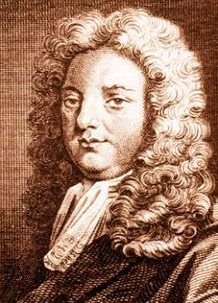
As you can see from the dates, Blow belongs to the generation previous to that of Arne and Boyce. He was born and raised in Nottingham, but rather than take up brigandage in Sherwood Forest he chose music, moved early to London as a chorister of the Chapel Royal and subsequently did quite well for himself, ending up as Composer to the Chapel Royal shortly before his death.
There’s one work by Blow of which I’m inordinately fond: Ode on the Death of Mr. Henry Purcell. Blow was Purcell’s teacher. He experienced an instance of the pupil exceeding the master. In 1679 he gave up his post as organist of Westminster Abbey to make room for Purcell, who assumed the position in that year. So Blow knew Purcell throughout his pupil’s lifetime and as the musical survivor he memorialized him with a wonderful musical tribute on a text by John Dryden. I first heard the work decades ago in a performance done by the astonishing countertenor Russell Oberlin with Charles Bressler as the second countertenor and the New York Pro Antiqua Musica ensemble, which those of us old enough to have been around for first stages of the early music revival movement will remember with great fondness. They did groundbreaking work and I was one of their auditory beneficiaries.
My current favorite recording of the work is by Carlos Mena and Damien Guillon as the countertenors with the able instrumental support of the Ricercar Consort led by Philippe Pierlot. Here’s a pic of the CD recto:
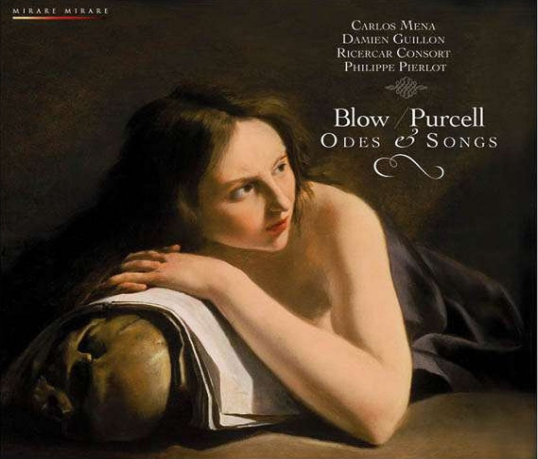
We should take no clues from the cover image, which suggests imminent mortality due to vitamin D deficiency. Purcell died young, aged 35 or 36, but it wasn’t due to lack of sunshine. The cause was one of those nebulous “fevers” with which history overlays its ignorance of pathology and leaves us in a fact fog. Whatever the specific pathogen might have been, it finished off Purcell when he was at the height of his powers.
Blow’s Ode is in two parts, the first in D minor and of plangent tone, the second in F major with a spot of sunshine. Just before the second section is an odd bit of what one assumes functions like recitative, with the unusual vocal figurations Blow used and in some measure passed on to Purcell. Here’s a sample from the score printed in 1696:
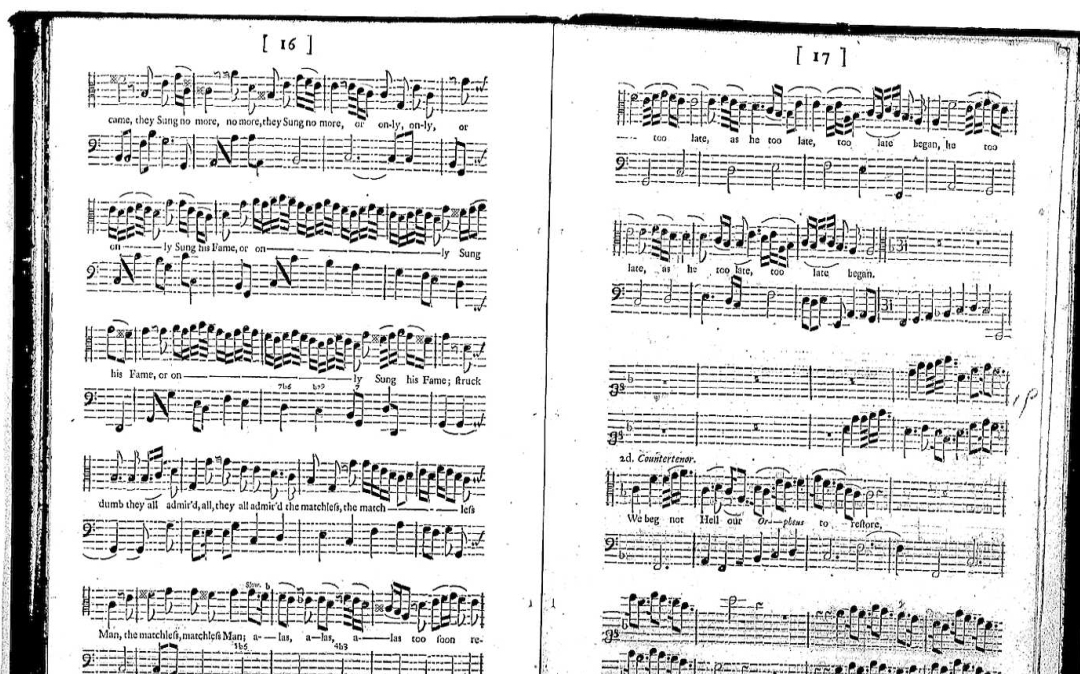
As you look at the vocal line on the second page it’s easy to see where Purcell learned his iambic rhythmic figurations, there they are in front of God and everybody as low-hanging fruit.
As is the case with everybody else on this list, the showing of recordings is disappointing. Only a handful of currently available recordings is to be found on Amazon, among them a couple recordings of the Ode, the masque Venus and Adonis, and some concerted vocal works called “symphony anthems.” They are cut of the same cloth as Purcell’s royal and ceremonial odes but without the instrumental symphonias that Purcell puts at the beginning. The more I listen to Blow the more I find the stylistic similarity between pupil and teacher apparent. I need to keep listening to get clear in my awareness where the differences lie.
In any case, I recommend the Ode as the perfect introduction to Blow’s music if you’re not familiar with it. I’ve been listening to it for over 30 years and it hasn’t bored me yet. 🙂
![]()
Capel Bond (1730-1790)
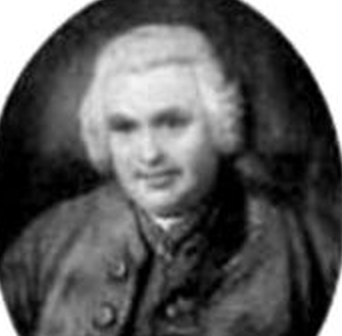
As is so often the case, the rest of England outside London goes wanting when it comes to exhibits of its cultural accomplishments. Bond was one of those thoroughly competent composers who never had anything to do with London or the royal court. He was born in Gloucester and received his musical education there. In 1749 at the age of 19 he decamped for Coventry where he held posts as organist. He was also quite the musical organizer, as his Wikipedia page (here) attests:
He married Ann Spooner, the daughter of Abraham Spooner and his second wife, Anne Birch, at Holy Trinity in 1768. Anne’s cousin Sarah Sebright (6th Baroness Sebright and mother of Henrietta, 2nd Countess Harewood) said of Capel Bond “I had seen Miss Spooner’s marriage in the news and never was more surprised how careful ought people to be that have Daughters who they admit into their families. I should have thought no man less formidable than Mr. Bond.”
Such was his ‘superior merit and regular attendance’ that he was awarded an additional £10 per annum as a ‘Compliment’ from 1770. He did much to encourage musical life in the Midlands, directing the Coventry Musical Society in large works such as Handel’s Messiah and Samson, organising concerts and participating in festivals in Coventry and Birmingham.
How’s that for a rich comment from Barroness Sebright? It’s just one more proof Jane Austin knew what she was talking about. How nice that Bond showed her up by being of “superior merit.” I’d have fallen flat on my face in that contest LOL.
As for music from his hand, all we have is the Six Concertos in Seven Parts published in London in 1766. I have a recording of them by The Parley of Instruments that’s wonderful. They’re as Handelian as the day is long, which shouldn’t surprise when we see what Bond was staging in his musical events — the “H” word is all over them. The recording is available in the Amazon marketplace but it appears to be out of print. This is all the more pity because on YouTube all you find are amateur performances of bits and bobs or absolutely hideous recordings by Maurice André that I wouldn’t wish on a dog. I just tried listening to one and immediately started screaming into the night. I really don’t mean my mention of Bond’s music to be a deep tease, he needs to be mentioned and if there’s anyway you can get your hands on the recording by The Parley of Instruments you’ll see immediately why he’s on the list. But it figures, doesn’t it — you carry on quite splendidly in the provinces and there’s the thanks you get. I’m tempted to say something rude about all those hoity-toity types in Bath and London. Our Capel deserves a place among them. Let’s hope history rights this wrong at some point and makes his music more available.
![]()
William Croft (1678-1727)

Croft was a Warwickshire lad but went early to London as a chorister in the Chapel Royal under the tutelage of John Blow (I know, small world …). In typical fashion, once in London always in London was the way with Croft just as with his teacher Blow, who as we saw was a Nottinghamshire lad before he headed for London. I use the word “lad” in the A. E. Housman sense of the word, not in the sense of the “lads” on Geordie Shore whose primary focus is “birds.” One doesn’t imagine the Georgie Shore type of lad maturing to write coronation anthems, does one. Of course not. Perish the thought.
After becoming old enough to invalidate himself as a chorister at the Chapel Royal Croft had the luck to get a job as organist at St. Anne’s Church in Soho — back in the day when Soho was mostly open countryside, not warren-like streets holding dens of inquity or — as is the case these days — boutique eateries purveying organic Peruvian fare or the like, punctuated by the odd sex shop with a fine selection of bondage gear. St. Anne’s was at the time Croft took office a new church, designed by an associate of Christopher Wren (and it has the look of it), with an organ recently relocated from the Dowager Queen’s Chapel in St. James’s Palace, so Croft was in at the beginning of its musical life. He shared the organist post with his erswhile Royal Chapel chorister chum Jeremiah Clarke now of “Trumpet Voluntary” fame, who distressingly came to a bad end for love (info here). The blossoming of Croft’s career is outlined in his Wikipedia page (here):
In 1707, he took over the Master of the Children of the Chapel Royal post, which had been left vacant by the suicide of Jeremiah Clarke, (one of Croft’s pupils in this capacity was Maurice Greene). The following year, Croft succeeded Blow (who had lately died) as organist of Westminster Abbey. He composed works for the funeral of Queen Anne (1714) and for the coronation of King George I (1715).
In 1724, Croft published Musica Sacra, a collection of church music, the first such collection to be printed in the form of a score. It contains a Burial Service, which may have been written for Queen Anne or for the Duke of Marlborough. Shortly afterwards his health deteriorated, and he died while visiting Bath.
Bath, wouldn’t you know it … if the rigidly elitist social structure doesn’t get you the microbes will. He’d have been better off going for a visit to his old stomping ground in rural Warwickshire, poor chap.
Having been raised up musically by Purcell’s teacher you’d hardly expect Croft to be a solid Handelian. He isn’t, he’s as Purcellian as they come. In his Music for the Funeral of Queen Mary he uses material from Purcell and qualified the use with these words:
“…there is one verse composed by my predecessor, the famous Mr Henry Purcell, to which, in justice to his memory, his name is applied. The reason why I did not compose that verse anew (so as to render the whole service entirely of my own composition) is obvious to every Artist; in the rest of that service composed by me, I have endeavoured as near as I could, to imitate that great master and celebrated composer, whose name will for ever stand high in the rank of those who have laboured to improve the English style …”
What Croft characterizes as “the English style” is, as we’ve discovered, shot through with French elements. The statement offers a window into the curious state of mind composers had at the time about what their own national style was. From a historical perspective it’s easy to see the foreign influences in the Baroque period from all the French stuff flying around in the Court circle. Apparently the composers themselves felt as English as unpasteurized Stilton. It remains for me one of life’s little mysteries.
When you listen to Croft’s music the Purcellian stamp becomes patently obvious. As far as recodings go, the situation is better than is the case with other composers in this list. I find four substantive recordings of Croft’s music on Amazon, one of instrumental music and four of church music. The only one I own is William Croft at St. Paul’s, which includes three works including the Burial Service with the homage piece to Purcell. It’s performed by the Choir of St. Paul’s Cathedral and The Parley of Instruments and has everything to recommend it. There’s quite a selection on YouTube, as well, including a good performance (here) of Ode for the Peace of Utrecht written in 1713, by Accademia Bizantina directed by Ottavio Dantone. It’s Purcellian to the core. The treaty of Utrecht (1713-1715) also occasioned Handel’s Te Deum (HWV 278) and the Jubilate (HWV279) among the very first major compositions he wrote for the English (but thoroughly German) court. There’s a good performance of the Te Deum by Rheinische Kantorei under the direction of the inimitable Hermann Max on YouTube here. It’s instructive to listen to Croft’s Ode and Handel’s Te Deum back to back. The stylistic differences leap out to the attention. Have a listen and see if Croft doesn’t belong on your canonical list — I’ll bet dollars to donuts you think he does.
![]()
William Williams (1675-1701)
There are about forty million guys who have had the name William Williams. There are so many that Wikipedia has a separate disambiguation page for the name. After combing through that list and doing more searching to find biographical information I discovered that my best bet lay with the German Wikipedia page on our composer of choice, which you can find here. Here’s the skinny with a translation by Yours Truly to prevent any linguistic indigestion in case you’re not on the Teutonic bandwagon:
Über seine frühen Lebensjahre ist nichts bekannt, vermutlich war er der Sohn des Sängers Henry Williams, der im Chor der Westminster Abbey sang. William Williams diente ab 1695 in der königlichen Kapelle als „Musician in Ordinary“ und Mitglied der 24 Violinisten des Königs. John Eccles benannte 1701 einen Satz in einer Suite für das Schauspiel The Double Mistress, „Mr. Williams Farwell“. Benefizkonzerte für seine Witwe fanden im April 1701 und im Dezember 1706 statt.
Sein heute bekanntestes Werk ist die Sonata of Imitations of Birds aus den 6 Triosonaten, die 1700 in Amsterdam erschienen. Diese Sammlung steht stilistisch den „Sonatas in Four Parts“ von Henry Purcell nahe und enthält wie diese italienische Merkmale, mit eher englischen Harmonien.
Des Weiteren komponierte er verschiedene Werke für Blockflöte (1700), Twelve New Songs (1699), ein Air für Violine und Bass, erschienen in John LentonsThe Gentlemens Diversion (1693) und eine nicht vollendete Bühnenmusik für 4 Streicherstimmen.
_______________________________________________________________
Nothing is known about his early life. He may have been the son of Henry Williams, who sang in the choir of Westminster Abbey. William Williams served from 1695 onward in the Chapel Royal as “Musician in Ordinary,” and was a member of the 24 Violins of the King. John Eccles in 1701 named a movement in music for the play The Double Mistress “Mr. Williams Far[e]well.” Benefit concerts for his widow took place in April of 1706 and December of 1706.
His best known work is the Sonata in Imitation of Birds from the six trio sonatas published in Amsterdam in 1700. This group of sonatas stands close in style to those of Purcell and shows Italian influence with typically English harmonies.
Williams also composed various works for recorder (1700), Twelve New Songs (1699) and an air for violin and basso continuo that appeared in John Lenton’s The Gentlemens Diversion (1693), as well as an unfinished stage work for four-part string ensemble.
Not bad for a life of only 26 years. I’d be happy to accomplish half as much in twice the span, to be honest. Williams may well have published his set of sonatas in Amsterday as our German friends inform us, but he also published them in London. Here’s the title page:
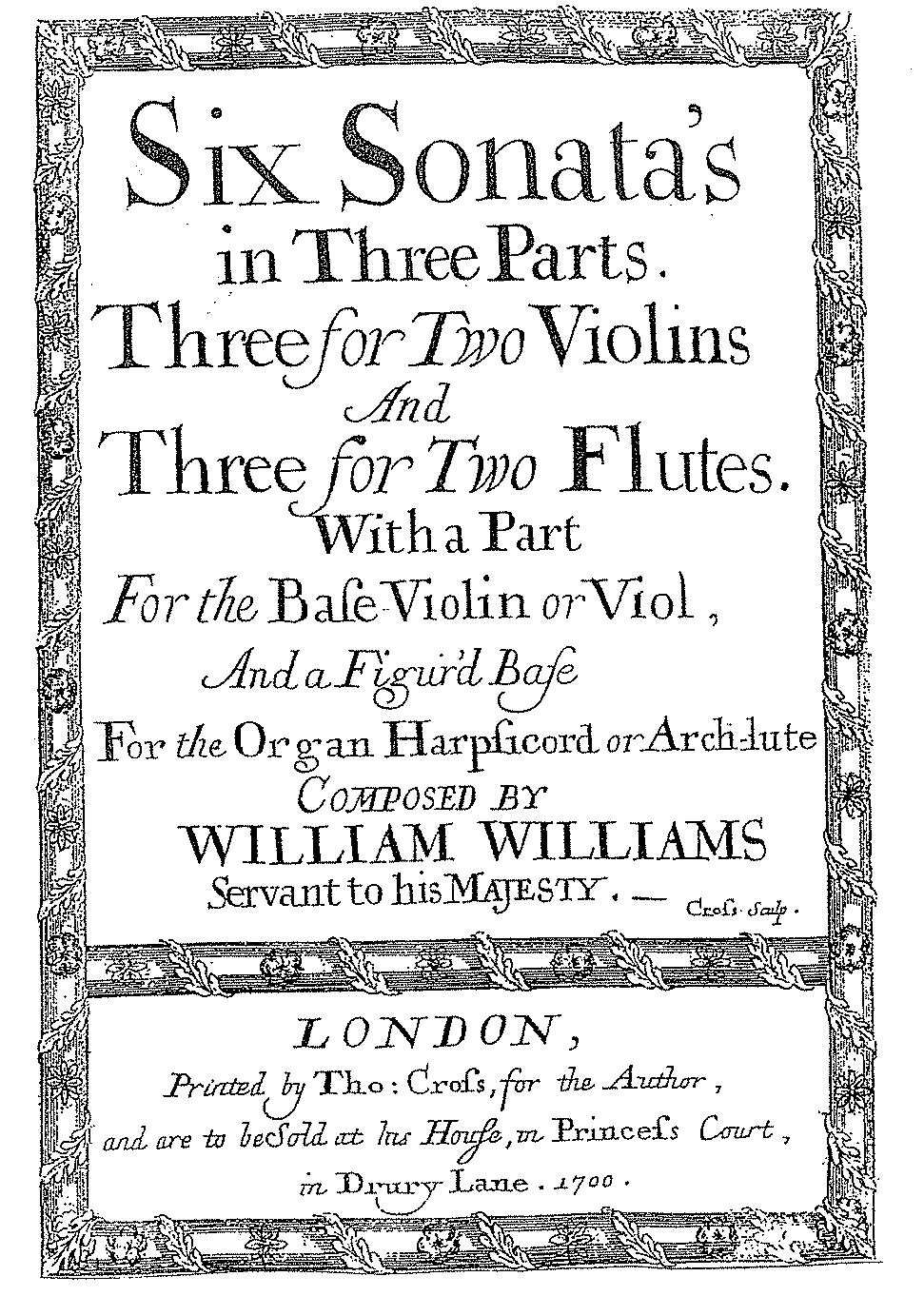
I suspect the reason the only biographical information on Williams I find is in German because the only recording of his music is also German, done in 2001 by that paragon of early music performance Camerata Köln on the CPO label. Here’s the CD verso:
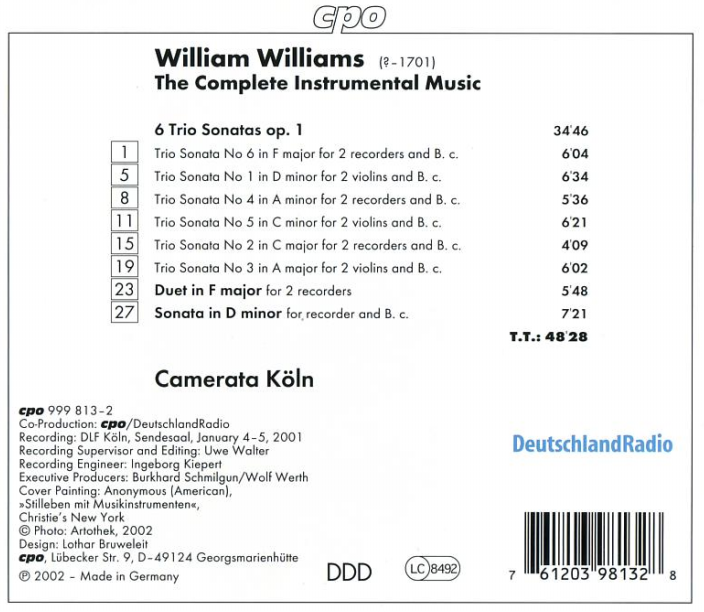
If I were English I’d be hanging my head in shame that Germans, the very lot who sent Herr Handel into the English midst, should beat me to the punch recording Williams’ music, who was as native a son as may be. Shame, I say, shame! We have Williams to listen to thanks to some Germans who have gone the extra mile to save an English Baroque composer from complete obscurity. If you’re all excited now and head over to Amazon to seal the deal, here’s what a search on “william williams” brings up:
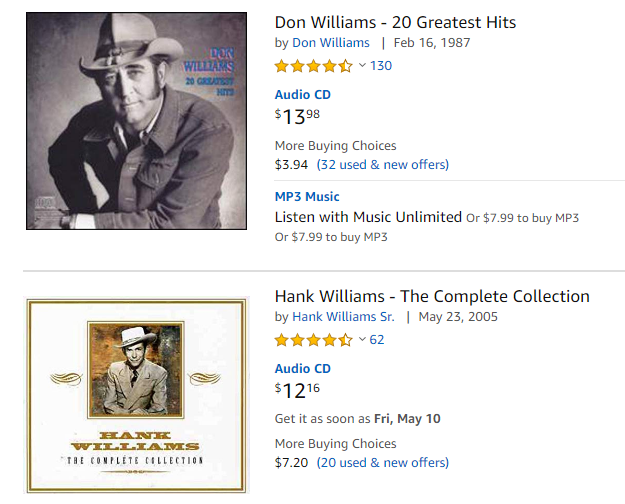
Oops. Day late, dollar short etc. etc. Fortunately YouTube once again comes to the rescue, as is so often the case these days. You can hear the entire Williams CD here. The first sonata of the set is the one titled “In Imitation of Birds” and it’s good fun. Have a listen and you’ll end up with a bright spot in your day.
![]()
Thomas Alexander Erskine, 6th Earl of Kellie (1732-1781)
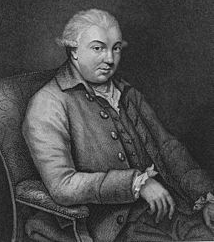
In this list we saved the daffiest for last. First of all, apologies are due Erskine and all Scots for including him in this list of composers of the English Baroque. Erskine is an outlier: a Scottish Baroque composer, the only one I’ve come across thus far in the course of my lifetime who could be called without qualification Scottish, having spent only four years of his life in London. So I beg pardon of Erskine and his compatriots for making my list tidy by squeezing him in among all these Sassenachs. I’ll exculpate myself by quoting Burns: “A Man’s a Man for a’ that.” In my neck of the woods it runs, “Sticks and stones may break my bones but names can never hurt me.”
Erskine’s biography is extraordinary and leaves my eyebrows halfway to my hairline. Here’s the story from his Wikipedia page (here):
His father Alexander Erskine, 5th Earl of Kellie, was incarcerated at Edinburgh Castle for supporting the Jacobites in the Jacobite rising of 1745. His mother, Janet Pitcairn, was the daughter of a celebrated physician and poet. Thomas attended the Royal High School, Edinburgh, and around 1752 left for Mannheim in Germany to study under the elder Johann Stamitz and returned to Scotland in 1756 as a virtuoso violinist and composer, nicknamed “Fiddler Tam”.
He began propagating the modern Mannheim style, of which he was to become widely acknowledged as the leading British exponent. Six of his three-movement “Overtures” (Symphonies) were published in Edinburgh in 1761. James Boswell borrowed five guineas from Erskine on 20 October 1762, and on 26 May 1763 took him on a visit to Lord Eglinton’s in London, where the overture the Earl composed for the popular pastiche The Maid of the Mill (at Covent Garden in 1765) became exceptionally popular. In 1767 the Earl returned to Scotland, where he became a leading light of the Edinburgh Musical Society, acting as deputy governor, and as an able violinist directed the concerts in St Cecillia’s Hall in Niddry Street (formerly Niddry’s Wynd), Edinburgh.
An active Freemason, he was elected the fourth Grand Master of the Grand Lodge of the Ancients at London in 1760 and served in that office for six years. He also served as the twenty-fourth Grand Master of the Grand Lodge of Scotland from 1763 to 1765.
His dissolute lifestyle extended to founding an (all-male) drinking club, and reportedly the playwright Samuel Foote advised Kellie to put his red nose into his greenhouse to ripen his cucumbers! He tended to compose on the spot and absent-mindedly give music away without further thought for it. His health suffered and he visited Spa, Belgium, but while returning was “struck with a paralytic shock” and while stopping for a few days at Brussels was attacked by a “putrid fever” and died.
Here we have material for a great movie. I imagine Colin Firth in the title role of Fiddler Tam. The filming in Mannheim would be wonderful, with all that delicious Baroque architecture:
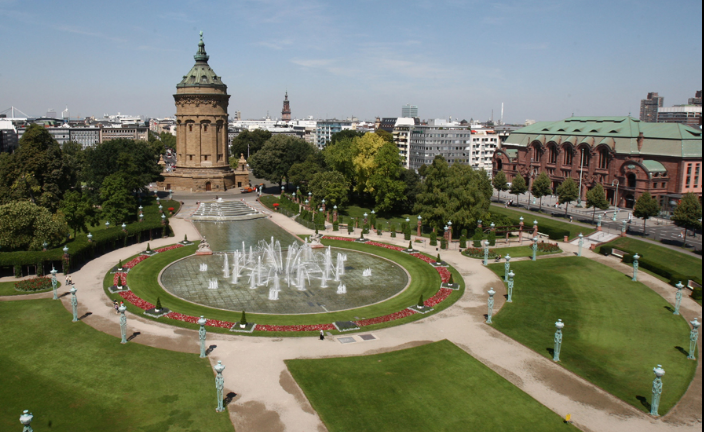
And of course there would be lots of music performances mixed into the debauchery — how could it be otherwise in Mannheim?
For Mannheim was Mecca for the early Classical style. The ringleader there was one Johann Stamitz — actually a Slav from Havlíčkův Brod, today in the Czech Republic but in the Habsburg domain of Bohemia in his day. His real name was Jan Václav Antonín Stamic. He and his band of buds in Mannheim had taken Europe by storm with their new style (full info here). The fact that Erskine studied with Stamitz and came back a virtuoso violinist and a composer of good repute speaks volumes, because Mannheim was a Very Big Deal. Erskine could well have carved out a stellar career for himself had he wanted to — he had both the chops and the connections.
But being an earl is also a Big Deal. It’s only two down on the ladder from a duke (marquis intervenes in the hierarchical order) and stands above both viscounts and barons. I puzzle out in my mind the calculus of prestige that must have figured into Erskine’s decisions about what to do with his life. Do I ditch the earl bit and throw myself into the musical ring with all these commoners like Purcell and Handel, or do I amuse myself occasionally by dashing off some fetching piece of chamber music and then call for another bottle of Scotch? It appears that the second line of reasoning won the day. Obviously things didn’t end well. When you consider the matter, however, it’s not surprising. The composers in this list without exception had the status of servants. Good repute was sometimes theirs, yes, but they remained servants to one aristocrat or another, usually at the Royal Court. Since Erskine was both titled and Scottish the road to musical greatness must have seemed to him studded with speedbumps and promising of nothing so much as a broken axle. It’s so much easier just to stay in your posh house and drink yourself silly.
It’s a great pity because Erskine was a really good composer. He could have gone places, perhaps been one of the shining stars of the early Classical in England, a position occupied by yet more foreigners — more Germans, wouldn’t you know, like Johann Christoph Bach and Carl Friedrich Abel. Thomas Linley (1756-1778, info here), justifiably called “the English Mozart,” was their full peer as a composer but met with a horrifically untimely end at the age of 22 in a boating accident. So the Germans took things over and carried on in the tradition Handel started. In my opinion Erskine was a better composer than J.C. Bach. Better than Abel, too. But there we have it, the vapors claimed their due and that was the end of that.
The only full recording of Erskine’s music was done in 2005 by Concerto Caledonia and it’s out of print. No surprise there. There are some tracks from it available on YouTube. I don’t own it. The only piece of music by Erskine I have is anthologized on a recording entitled The Trio Sonata in 18th Century England done by London Baroque and issued in 2010 on the BIS label. It’s available as an MP3 download on Amazon.
At the end of Erskine’s Wikipedia page we find this juicy tidbit:
Until the 1970s only a small number of his compositions was thought to survive, though the discovery in 1989 of two manuscripts containing chamber works at Kilravock Castle has doubled the number of his surviving compositions – notably with nine trio sonatas and nine string quartets. Interest in him was recently revived by John Purser, among others, and a CD of his works has now been made.
I suspect the CD mentioned is the one by Concerto Caledonia, which means we’re back to ground zero in the available recording department. Harumph.
Maybe one day we humans will get our act together and start paying attention to the things that really matter, like preserving and celebrating the artistic heritage of those who went before us, instead of expending all our energies on partisan political warfare, video games and tweets, tweets and more tweets. Until that miracle happens, I hope you’ll join me in appreciating and enjoying those fruits of the English Baroque available for our ears. Kudos to the folks who’ve done the work to deliver them.
Rule, Britannia!
